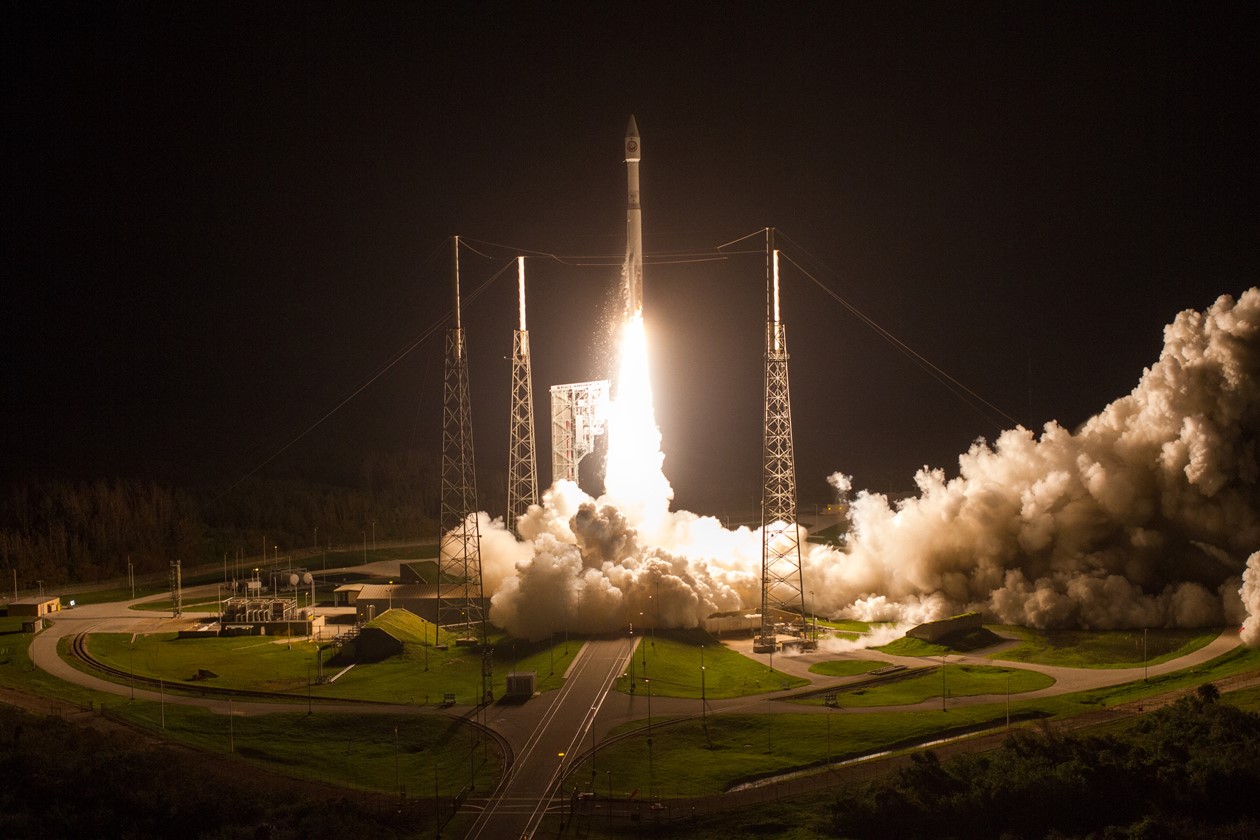The NROL-52 satellite soared into orbit this morning (Oct. 15) atop a United Launch Alliance (ULA) Atlas V rocket, which lifted off at 3:28 a.m. EDT (0728 GMT) from Cape Canaveral Air Force Station in Florida.The launch came after more than a week of delays due to weather and a suspect telemetry transmitter that had to be replaced.
An Atlas 5 also provided the ride for the NROL-42 reconnaissance satellite, which launched on Sept. 24 from California's Vandenberg Air Force Base. [The Most Dangerous Space Weapons Ever]
Both NROL-42 and NROL-52 were built by the U.S. National Reconnaissance Office (NRO), which operates the nation's fleet of spy satellites. NRO missions tend to be classified, so it's unclear what exactly NROL-52 will be looking at as it zips around Earth in its undisclosed orbit.
Today's launch — which was delayed two days by bad weather, and then by another week to replace a telemetry transmitter on the rocket — was the 26th that ULA has provided for the NRO, and the 74th flight for the Atlas V overall. All of these missions have been successful to date.
"Today's launch is a testament to the tireless dedication of the ULA team, demonstrating why ULA continues to serve as our nation's most dependable and successful launch provider,"Laura Maginnis, ULA vice president of Government Satellite Launch, said in a statement after the launch. "After recovering from Hurricane Irma that came through the area last month, and the last week's weather challenges, the team found the right opportunity today to deliver this critical national asset to orbit."
The liftoff was part of a busy week in spaceflight. For example, on Monday (Oct. 9), a SpaceX Falcon 9 rocket launched from California's Vandenberg Air Force Base, carrying 10 communications satellites to orbit for the company Iridium.
Also in action Monday were Japan's H-2A rocket and China's Long March 2D booster, which lofted a Japanese navigation satellite and a remote-sensing satellite for the Venezuelan government, respectively.
Get the world’s most fascinating discoveries delivered straight to your inbox.
Then, on Wednesday (Oct. 11), SpaceX launched the SES 11/EchoStar 105 communications satellite from NASA's Kennedy Space Center, which is next to Cape Canaveral Air Force Station. That liftoff involved a Falcon 9 rocket with a pre-flown first stage.
Both Falcon 9 missions also featured successful touchdowns by the rocket's first stage. Landing and then re-flying rockets (and spacecraft) is a key part of SpaceX's plan to help colonize Mars, the updated version of which company founder and CEO Elon Musk unveiled late last month at a conference in Australia.
Follow Mike Wall on Twitter @michaeldwall and Google+. Follow us @Spacedotcom, Facebook or Google+. Originally published on Space.com.

 Live Science Plus
Live Science Plus







